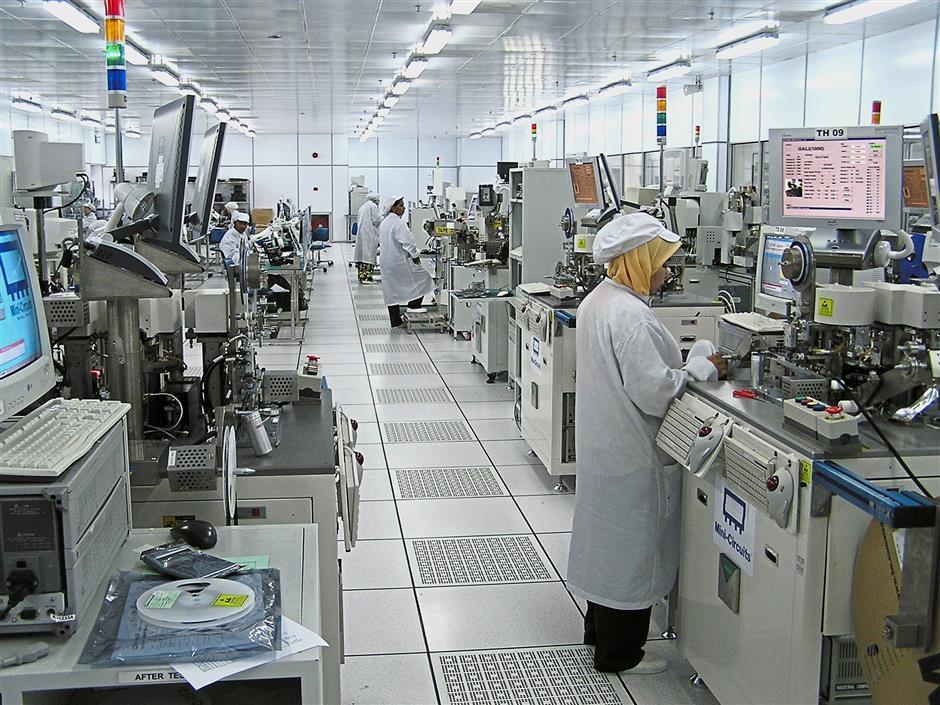


Manufacturer looks at new products to stay competitive as new players start crowding out the industry
PENANG may become a key site of high-powered radio frequency integrated circuits (RFICs) production for unmanned vehicles as Mini-Circuits Technologies (Malaysia) considers a proposal to make such chips here.
The company, a subsidiary of New York-based Scientific Component, plans to produce the chips at its Bayan Lepas plant to stay competitive and grow in the RF chip industry.
“Such RFICs are in high demand due to the growing popularity of unmanned vehicles use in surveillance, critical mission and military operations.
“In the early days, commercial unmanned aerial vehicles (UAVs) were used for video and photography. But over the past few years, the new generation of UAVs have enhanced capabilities and are employed in areas such as agriculture, real estate, architecture, construction, delivery, and media industries.
“This warrants us to study a plan for the company to go beyond making RF chips for 4G/5G mobile base stations.
We are now developing the technology to produce these next-generation RFICs in Penang,” Mini-Circuits Technologies (Malaysia) president and chief executive officer Datuk Seri Kelvin Kiew says.
According to Kiew, the business plan will drive the revenue of the subsidiary beyond the US$150mil mark over the next five years, compared to about US$90mil that the company is targeting to achieve this year. Kiew says the company in Penang is now producing RF chips for 5G, but the business is becoming increasingly competitive with the entry of new players.
“We are looking at additional investment and recruitment of more software and design engineers for Penang.
“There is no deadline set for the new business, but we hope to see Mini-Circuits supplying the new RF chips to the market in two years’ time,” he says.
The UAV market, estimated to be worth about US$20.71bil in 2018, is projected to reach US$52.30bil by 2025, according to the Markets and Markets report titled “Unmanned Aerial Vehicle (UAV) Market – Global Forecast to 2025”. Analysts expect the market to grow at a compounded annual growth rate (CAGR) of 14.51% from 2018 to 2025.
“The increase usage of UAVs in civil and commercial and military applications is a key factor expected to drive the growth of the UAV market. Improvements in flight control systems, due to the development of sense-and-avoid technology, are expected to fuel the growth of the market,” the report says.
Besides military applications, the civil and commercial applications are expected to see the highest employment of UAVs from 2018 and beyond 2020, notes Kiew.
“UAVs are now used for inspection, surveying, mapping, and remote sensing.
“The efficiency of UAVs and the low operating cost have made their use increasingly popular,” Kiew adds.
Additionally, there is also demand from the unmanned grounded vehicle (UGV) segment, he says.
He cites a Business Intelligence and Strategy Partner report, saying the global UGV market is expected to reach US$9.06bil by 2023.
“We can see private companies and the military sectors in different regions of the world employing unmanned ground vehicles to maintain their edge in the global market and in geopolitics,” Kiew adds.
On its 5G RF chips, the Penang plant shipped out its first batch in the first quarter of 2018 to customers in China and US.
These are RF chips used in 5G mobile telecommunication infrastructure.
“The value of the 5G RF chips is estimated to be about US$40mil. Every year, we ship out about US$80mil’s worth of RF chips from the Penang plant,” he says.
Kiew says Mini-Circuits is also exploring the possibility of making 5G RF chips for high-end automobiles and medical equipment.
This will be another growth area for the company as new electronic devices need to have high-speed data transmission capabilities.
According to Kiew, 5G networks essentially allow current network coverage to expanded into hard-to-reach areas.
On the business outlook for 2018, Kiew says the Penang plant is projecting a US$90mil revenue, up from US$70mil in 2017.
Annually, Mini-Circuits spends about 10% to 15% of its revenue on research and development work.
Mini-Circuits specialises in making broadband RF chips which can be used for both low- and high-frequency transmissions.
It makes RF chips such as amplifiers, digital step attenuators, mixers and switches for used in mobile network infrastructure, cable TV modems and equipment.
Scientific Component is projected to generate group revenue of US$360mil for 2018, compared to US$330mil in 2017.
Source: The Star
Photo Credit: The Star
